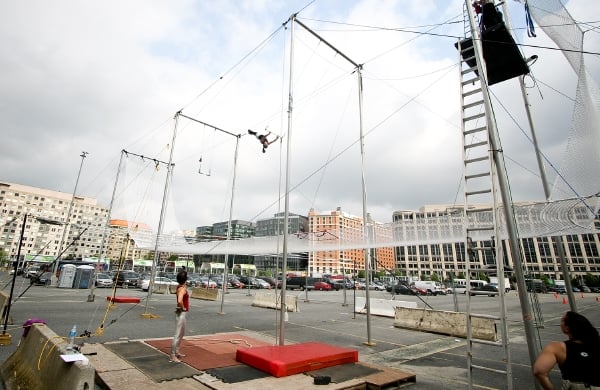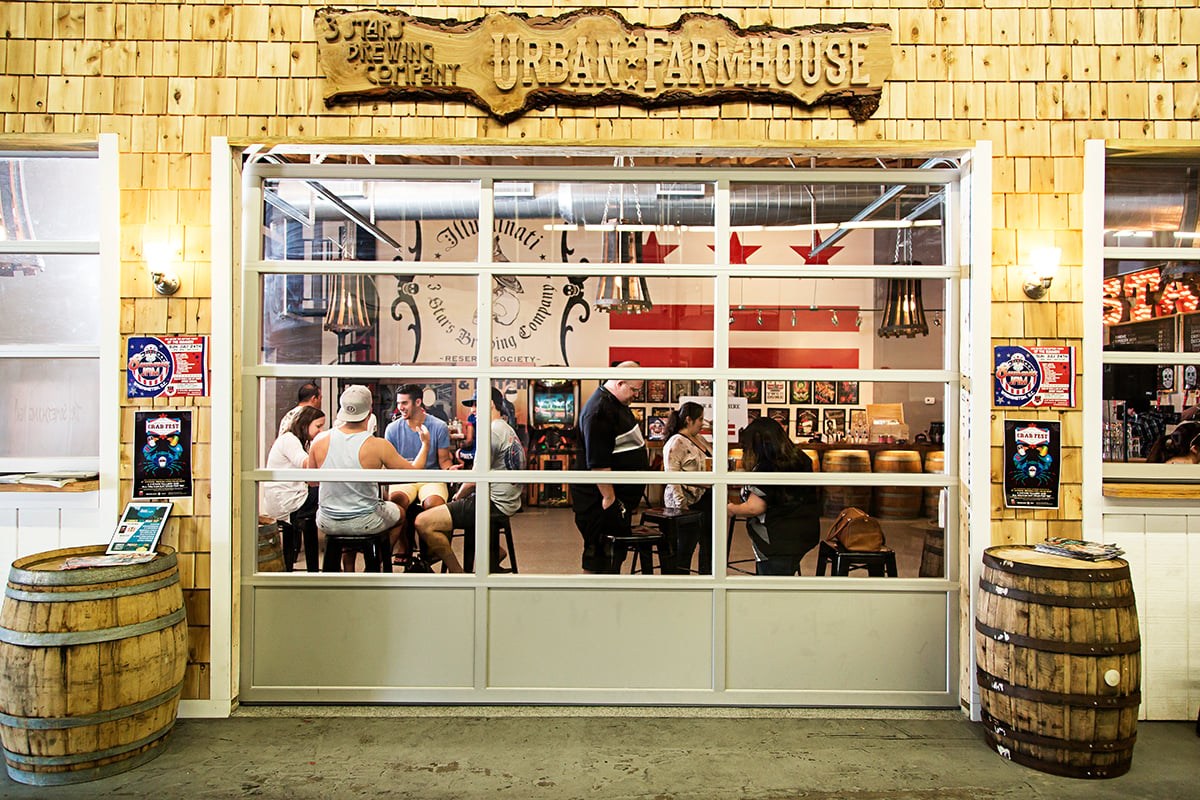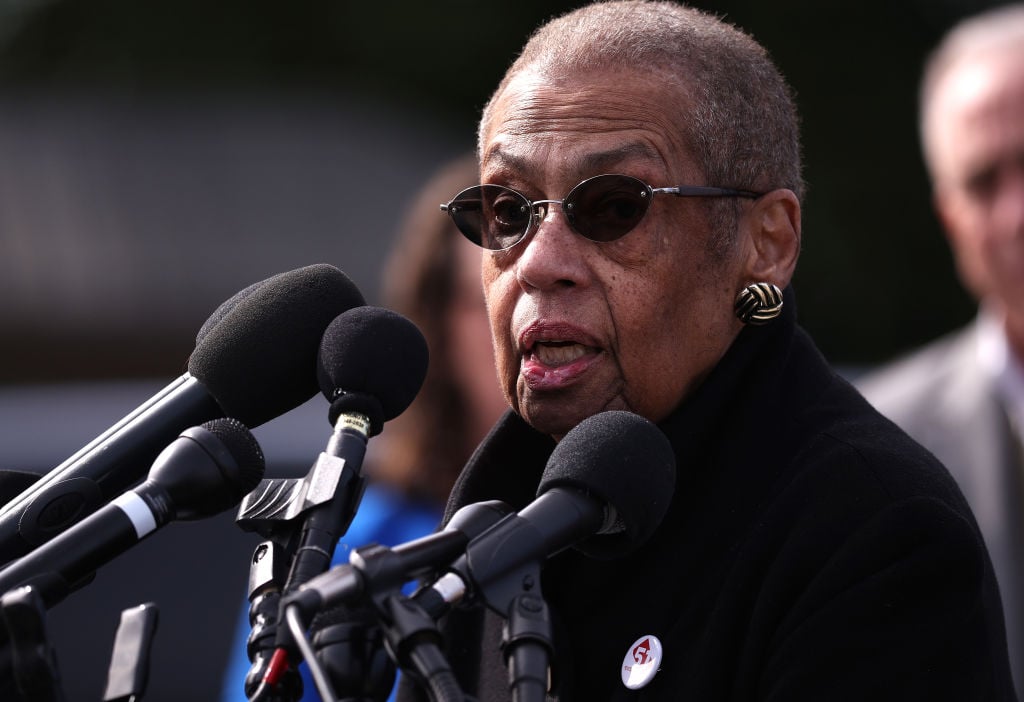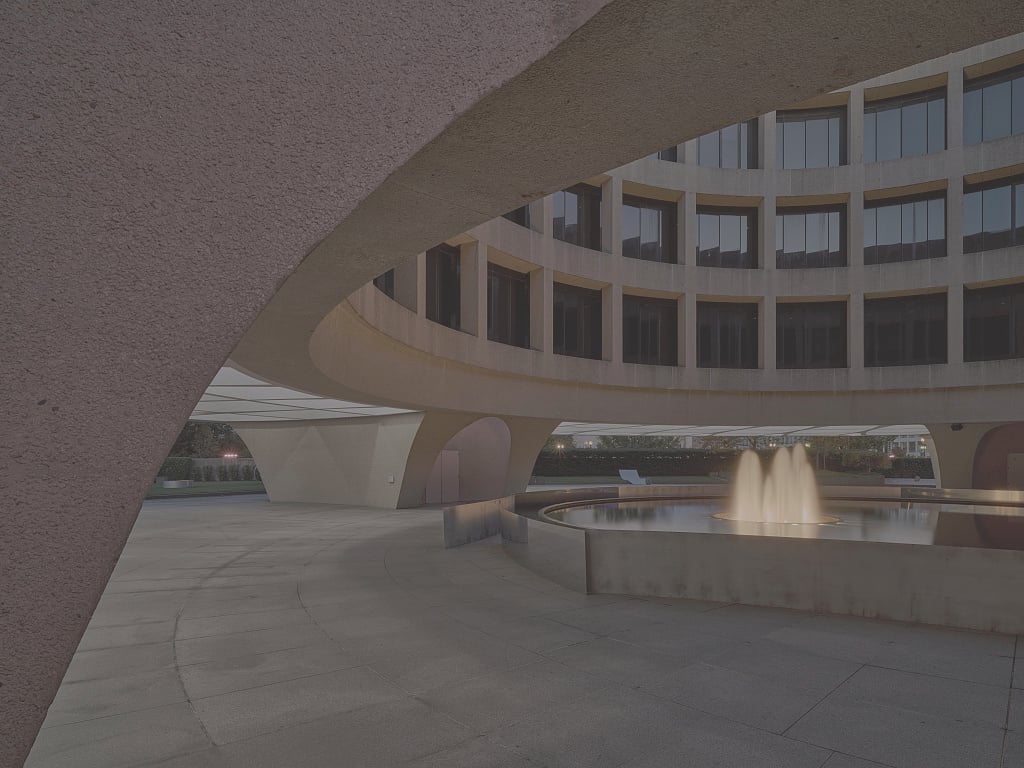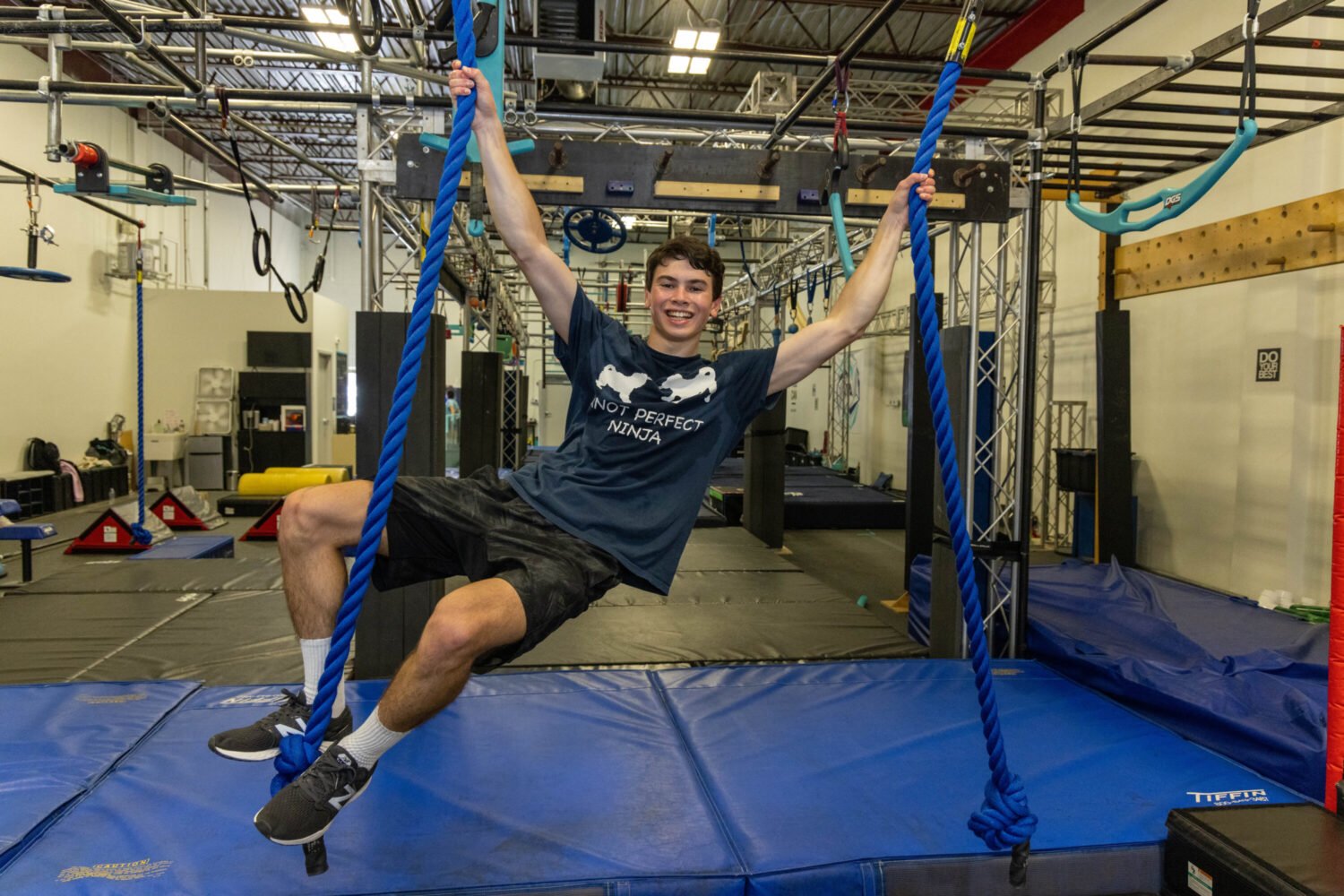The Big Apple-based Trapeze School New York set up shop in DC’s Penn Quarter earlier this month and has been selling out classes almost every day since then. Trapeze-school head Brian McVicker estimates that more than 500 locals have already given the circus sport a try. “The network of people has started here,” he says. “People are texting their friends and telling them about us in between runs.”
I was among the fliers in a class last week—and yes, I texted my friends—where I learned the basics of the sport: knee-hanging, swinging, and catching. The class was full, with ten people, and after a 15-minute safety instruction and one turn each on the low bar near the ground, we were climbing the ladder to the platform, 23 feet in the air.
Fliers are encouraged to wear tight-fitting pants that come below the knee and a tight shirt or one that will tuck in. You’ll either be barefoot or in socks, so don’t worry about footwear. For safety, you’ll wear a waist harness that’s attached to ropes on a pulley.
In terms of physical requirements, the bar is surprisingly low. McVicker says anyone who can hang from a bar with straight arms for 30 seconds can do trapeze. Physical fitness, strength, and flexibility are helpful but not required. There are no age requirements, either, but McVicker says his youngest fliers are usually around five or six. “Kids need to be able to pay attention for the whole two-hour class and follow directions,” he says.
Raed Alawadhi, a yoga addict, was the first to fly in my class. He’d taken the day off from work to try trapeze with his friend Kristen Paradies. On his first run, Alawadhi seemed smooth and controlled as he tucked his knees up and hooked his legs around the bar. Students and instructors seemed equally impressed. “You feel the wind, and you see the people and the cars getting smaller around you,” he said once he’d returned to the ground. “It’s fascinating.”
I was next. My heart pounded as I climbed the ladder, which was secured to the platform with what appeared to be wrapped bungee cord. I reminded myself not to look down.
While I don’t consider myself to be afraid of heights, I prefer activities that are closer to the ground—and ones where you can’t picture yourself dropping face first into asphalt 20 feet below. Of course, there’s a net in between, but logic rarely wins in these kinds of situations.
Video by Jessica Sidman
>> Next page: Photo slide show and more!
Strapped into the pulley, I stepped to the edge of the platform, leaned out, and grabbed the bar. Students are taught to push their hips out to help alleviate strain in their shoulders, but it’s a frightening prospect: All your momentum is pushing you forward, off the platform, while an instructor anchors you by holding the loop on the back of your harness. It’s a quick lesson in trust.
“Emily’s ready with a knee-hang!” shouted Christina Cantlin, my platform anchor. Scout Day, the instructor manning the ropes from the ground, replied, “Hep!”—the start command. I was off.
It’s hard to describe what trapeze feels like—exhilarating, yes; terrifying, not really—because you don’t have much time to assess what you’re thinking and feeling. All the time you’re in the air, the instructor is telling you what to do—hook your knees, arch your back, swing forward, swing backward, flip to dismount.
Photographs by Chris Leaman
“You’re working on getting the timing right,” explains Samantha Loss, who works for TSNY but who, on this day, was flying with us. “If you get all the pieces in the right spots, at the end of the class we have one of our instructors go up to do some catching.”
Some what? Turns out, by the end of the first class, students learn to hang by their knees and swing to another flier on a second trapeze—just like in the circus. McVicker says that seven out of ten students can usually complete the catch in their first class. In my group, all of us were able to do it.
“The thrill is still there every single time with trapeze,” says Angela Liang, a self-described thrill seeker who brought her young son, Zachary, to the class. Liang had done trapeze more than a dozen times. She’d moved past the knee-hang and was doing complicated flips and turns throughout the class. Liang first discovered trapeze when TSNY came to Baltimore. Now that the rig is closer to her Northern Virginia home, Liang has made it part of her regular workout routine. “If this could be a year-round thing, I’d get rid of my gym membership,” she says.
Liang is in luck. Starting in the fall, TSNY will take up residence for at least the next five years at DC Yards at Fourth and Tingey streets, Southeast, says McVicker. And who does he most hope will stop by for a visit? “The Obamas,” he says. “I think they would love it.”
TSNY Washington DC, Ninth and H sts., NW; 410-459-6839. Classes are $45 to $55 depending on day and time. Discount packages are available.

